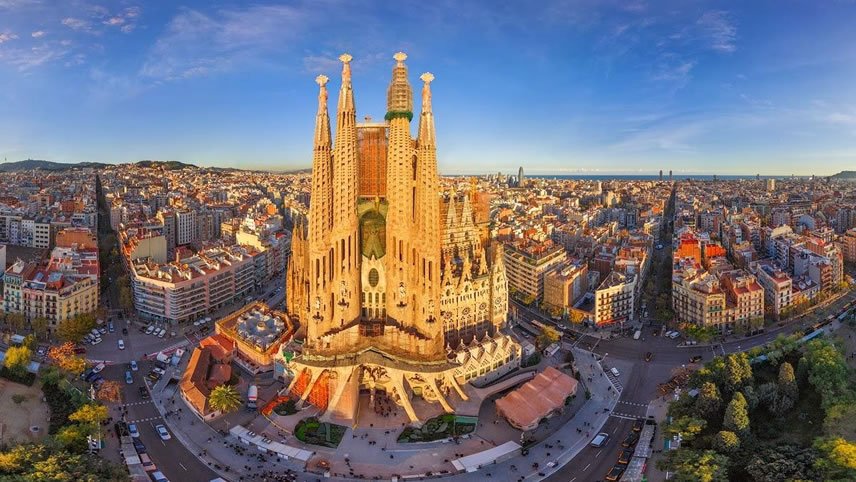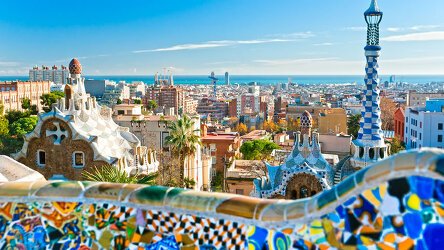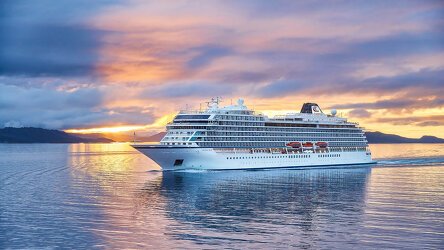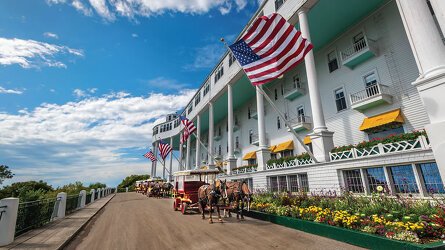Overview
Itinerary
For centuries, Rome ruled much of Europe, building a vast empire from the power of emperors. More than 2,500 years of history live in the city's streets. Ancient structures recall those heady days when the cheers of 80,000 spectators roared from the Colosseum, citizens mingled in the Forum and senators asked the gods for guidance at the Pantheon. Along with the Vatican and St. Peter's Basilica, this rich pocket of Italy is one of the world's greatest repositories of history and civilization.
Best known as a gateway to the Amalfi Coast, Salerno boasts a rich history and its founding dates back more than 2,500 years. Its heyday came under Norman rule, when its medical school became the foremost institution of its kind in Europe. During World War II, the late summer of 1943 saw heavy fighting in Salerno during Operation Avalanche, the landing of Allied troops on Italian shores. Miraculously, much of the ancient city survived the heavy fighting. Today, its winding, narrow streets are an invitation for further exploration beyond the newly renovated shoreside boulevard.
Palermo, the Sicilian capital, is noted for its culture and culinary scene. Bustling open markets can be found across the city offering seasonal fresh produce as well as traditional tasty morsels, such as arancini (fried rice balls) and sfincione (focaccia topped with sweet tomato sauce). The city is also filled with historic gems, such as the stunning Royal Palace of Palermo—a fine example of Norman architecture and a UNESCO World Heritage Site; this lavish palace is one of Europe's oldest private residence.
Tunis is a vibrant mix of North African tradition and French influences. The modern city revolves around Avenue Habib Bourguiba, affectionately called the “Champs-Élysées” for its colonial buildings, shops and cafés. A drive along this lively tree-lined boulevard and a walk through the passageways of the city's souks reveal contrasting views of ancient and modern Tunisia. The nearby ancient city of Carthage was the capital of the Carthaginian Republic, a powerhouse in the Mediterranean for centuries. A stroll around this UNESCO site opens a window to antiquity.
About one-fifth of Sardinia's land is used for agriculture, earning it a reputation as Italy's other farmland. Tomatoes, artichokes, citrus fruits and olives are some of its primary crops. And because Sardinia cannot call itself Italian without producing wine, lush vineyards blanket its hillsides. Here, the Castello District is home to a Roman amphitheater and the subterranean Cathedral of St. Mary, a Pisan relic. Cagliari gleams in the Sardinian sun, inspiring D.H. Lawrence to call it the “white Jerusalem.”
Sail the ocean stage on which civilizations have risen and fallen, where empires ventured forth in their great armadas to control these strategic waters.
Valencia is steeped in 2,000 years of history and culture. Its Old Town is one of Spain's largest, a diverse medley of ancient buildings, wide-open plazas and cultural monuments. The Gothic Silk Exchange, a UNESCO World Heritage Site, bears witness to Valencia's Renaissance trading power. A literal taste of Valencia's past bubbles up in every skillet of paella. The centuries-old rice dish was invented here and perfected by farmers; barracas throughout the city offer demonstrations and tastings of this famously rustic cuisine.
The vibrant city of Barcelona, with its lively culture and inviting outdoor spaces, preserves a rich history. Picturesque medieval lanes wind through the oldest part of the city, the Gothic Quarter, where remnants of the city's Roman wall were uncovered. Its treasures include the neo-Gothic Barcelona Cathedral, the medieval Jewish district of El Call and the Romanesque Church of Santa Maria del Pi. In the evenings, diners relax in the Royal Plaza at restaurants along the elegant square's perimeter.
Barcelona is steeped in history, with stunning architecture and a rich culture. Mediterranean breezes grace the shore and Catalonia's capital is a feast for the senses. Long strolls on wide boulevards—such as Las Ramblas, the mile-long leafy pedestrian way, and the Passeig de Gràcia, lined with some of Europe's most elegant buildings—set the tone for a city that moves to its own tempo. Native son and famed architect Antoni Gaudí adorned his city with whimsy, whether along fantastical city blocks or with his colossal masterpiece, the towering La Sagrada Família cathedral.
In a picturesque setting on France's southern coast, Sète is renowned for its vibrant atmosphere and cultural charm. Known as the “Venice of Languedoc,” its network of canals offer an alluring ambience, with boats bobbing in the water and colorful buildings lining the banks. Due to its booming fishing industry, Sète features an array of delicious seafood, centered around the town's bustling fish market, Les Halles de Sète. The best way to explore is on foot or by bicycle, where you can while away the time along the canals that link the Mediterranean to the Thau Lagoon.
Marseille is rich in historic treasures, nestled between the Mediterranean and rocky hills of limestone. Two 17th-century fortresses dominate the charming Vieux Port, or Old Port, the natural harbor that hosts all manner of watercraft, from sleek elegant yachts to old style fishing vessels. Its picturesque quay is one of the world's most romantic walks, lined with dozens of cafés and shops. Also worth exploring is the city center, graced by La Canebière boulevard. Linger in a café and sample the city's signature bouillabaisse made from freshly caught fish.
The chic city of Monte Carlo in the petite kingdom of Monaco boasts some of the world's most exclusive shopping and a beautiful old port. A fairy-tale aura has settled on this glittering city of the Grimaldi family, perhaps nowhere more elegantly than at the Prince's Palace, where the late American actress-turned-princess Grace Kelly presided with Prince Rainier III. Monte Carlo's medieval quarter perches on “The Rock,” an escarpment at the foot of the Maritime Alps, and offers spectacular views of the Mediterranean and the harbor lined with mega-yachts.
Tuscany is known equally as the cradle of the Renaissance and a center of culinary delights and astounding wines. Throughout this emerald-green countryside dotted with cypress trees, endless delights unfold. Among them is Florence, a living museum of the Renaissance. Brunelleschi's famous Duomo dominates the medieval cityscape—an architectural achievement. Another Tuscan treasure, the Square of Miracles, unfolds in Pisa. Here, a trinity of masterpieces—the Leaning Tower, Pisa Cathedral and Baptistery—comprise some of Europe's finest art and architecture.
Tuscany is known for its scenic beauty and exudes a unique, rustic character. Vineyards, olive tree groves, wheat fields and endless expanses of farmland skirt the bases of medieval hill towns as they march across an undulating landscape of gentle hills. Fertile soils produce some of the world's finest wines, including Chianti and Vino Nobile di Montepulciano. More than this, many consider Tuscany the birthplace of the original farm-to-table movement. Simple, honest food graces the Tuscan table, from creamy cheeses to thick Florentine steak grilled over a wood fire.
Bid farewell to your fellow guests and journey home. Or spend more time exploring, perhaps joining one of our extensions.
Life Onboard Viking Star
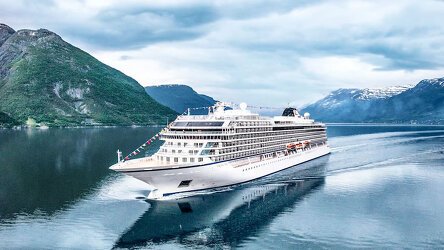
Launched in 2015, the Viking Star was Vikings' first an all-veranda ship, now part of a fleet of award winning, state of the art ships incorporating all the comforts & luxuries you would expect from Viking. Read more

Viking are destination experts. With no casinos or children on board, you can be assured that the focus is firmly on enrichment and education. Read more
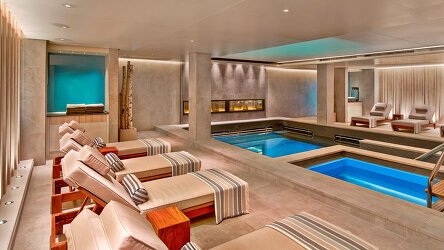
After a day of exploration or just to enhance the relaxation of a day at sea, the on-board Spa will leave you feeling recharged and revitalized. Read more

Viking offer eight on board dining options. Beer, wine and soft drinks are available with lunch and dinner at no additional charge of fee. Read more

Viking proudly includes all that you need and nothing you do not. A variety of features and services valued at $200 per person per day are standard inclusions in your cruise. Read more
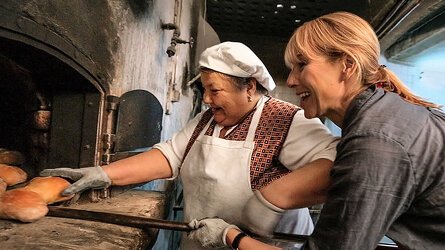
Viking include one complimentary shore excursion in every port of call. Enjoy exclusive entry to cultural treasures and seldom-seen collections around the world. Read more

Trip Reviews (1) Most Recent 'Jewels of the Mediterranean' Reviews
Brochure

Viking River, Ocean & Expedition Voyages (2025-27)
Availability
 USD
Port charges, taxes and fees included.
USD
Port charges, taxes and fees included.
Viking Cruise $25 Deposits!
Tour & cruises prices are per person. Prices shown have savings applied, are subject to availability and may be withdrawn at any time without notice. Pricing and trip details are correct at this point in time, however are subject to confirmation at the time of booking and are subject to change by Viking. For cruise itineraries, cabin images are sourced from Viking. These should be treated as indicative only. Cabin inclusions, upholsteries and room layout may differ to the image(s) shown depending on the ship selected and your sailing dates.

